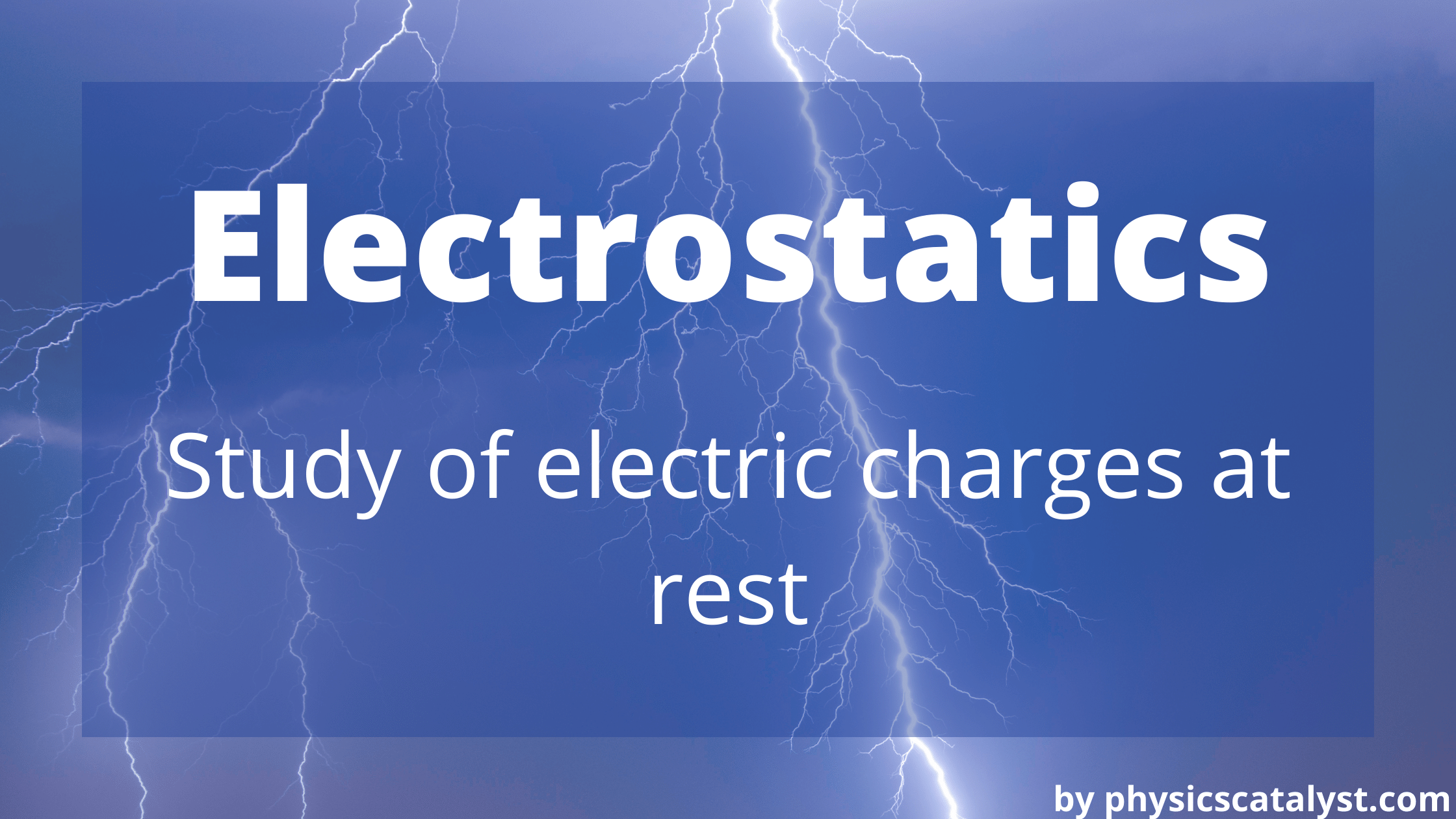In this article electrostatics in physics learn about what electrostatics is all about and about its industrial applications.

Electrostatics in Physics
Electrostatics is the study of electric charges at rest. Coulomb’s Law explains the relationship between two or more electric charges. In electrostatics, we do not concern with the movement of charges. Electrostatics involves electric charges, the forces acting on them, and their behavior in substances.
Electrostatics, as we study today, depends on the nature of electric charges. The nature of charges depends on the models of the atom proposed by Ernest Rutherford and Niels Bohr. According to their theories, an atom consists of two types of charges: positively charged protons in a nucleus surrounded by negatively charged electrons. A neutral atom has equal numbers of electrons and protons.
What we study under electrostatics is static electricity. Electrostatics involves the buildup of charge on the surface of objects due to contact with other surfaces. Some of the topics we study under electrostatics are
and much more. Visit class 12 physics page to learn about more such topics.
Example of Electrostatics
Let us look at few examples that involve electrostatics are
- A charged comb will attract small items, such as small bits of paper, when brought close to them. If the bits of papers come into contact with the comb, some of them would acquire charges similar to that of the comb. When both comb and paper bits have the same charge they will then repel each other.
- If two objects are rubbed together, particularly if the objects are insulators and the air is dry, the objects then have equal and opposite charges. As a result, an attractive force exists between them. The object with fewer electrons is positively charged, and the other object with an excess of electrons is negatively charged. Force is merely an attraction between charges of the opposite sign.
- The lightning process is an example of electrostatic in nature. When the clouds rub each other, the particles are charged, and the lightning flash is the equalizing charge delivered to Earth as the earth is a neutral place to dump charges. The electrostatic field between the clouds and the earth will generate ions and free electrons in the air.
Applications of Electrostatics
Some industrial applications of electrostatics are:
- In designing electrostatics generators like the Van de Graff generator
- In electrostatic spraying of paints, powders, etc.
- In the design of cathode ray tubes for radar, television, etc.
- Ink-jet printing
- Understanding lightning that strikes from the cloud base to the ground.
- Adhesive forces of glue associated with surface tension, all are electric in nature
